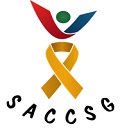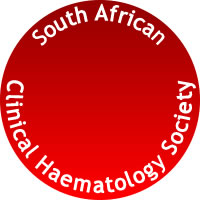Original Research
South African pilot study: End-to-end radiotherapy and medical physics dosimetry audits
Submitted: 01 April 2019 | Published: 30 October 2019
About the author(s)
Humbulani V. Maselesele, National Metrology Institute of South Africa, Pretoria, South AfricaZakithi N. Msimang, National Metrology Institute of South Africa, Pretoria, South Africa
Nkosi Maphumulo, Charlotte Maxeke Johannesburg Academic Hospital, Johannesburg, South Africa
Debbie van der Merwe, School of Clinical Medicine, University of the Witwatersrand, Johannesburg, South Africa
Abstract
Background: The National Metrology Institute of South Africa (NMISA), as an institute responsible for disseminating traceability, has embarked on establishing a national dosimetry audit programme with assistance from the International Atomic Energy Agency (IAEA). Dosimetry audits in South Africa are carried out through the IAEA using mailed thermoluminescents. Onsite dosimetry is not performed in South Africa but the IAEA has provided a dosimetry kit to NMISA to facilitate the audits. The kit consists of a Farmer type PTW 30012 ionisation chamber for photon beams and an Advanced Markus PTW 34045 chamber for electron beams with a water phantom and a Perspex plate phantom. End-to-end audits are also not performed or, if performed, they are not monitored officially in South Africa; however, the IAEA also provided a CIRS IMRT thorax phantom which can be used nationally.
Aim: To test the establishment of radiotherapy and medical physics dosimetry audits at pilot centres in South Africa.
Setting: NIMISA was tasked by IAEA to establish radiotherapy and medical physics dosimetry audits. A calibration kit was supplied by the IAEA for dosimetry measurement and a CIRS IMRT thorax phantom was also supplied by the IAEA for end-to-end measurements. Five hospitals were identified by the steering committee as pilot centres to test the establishment of the dosimetry audits.
Methods: The audit measurements for reference beams were carried out using a Farmer type PTW 30012 ionisation chamber for photon beams and an Advanced Markus PTW 34045 chamber for electron beams with a water phantom and a Perspex plate phantom, respectively. End-to-end audits, which involved computed tomography (CT) scanning, treatment planning and treatment delivery with dose measurements, were carried out using a CIRS IMRT thorax phantom. The planning staff or the medical physicists were requested to image the phantom and create a treatment plan according to a procedure provided by the researcher on their institutional treatment planning system. On completion, the approved plan was delivered at the treatment unit by setting up the phantom and measuring the doses with an ionisation chamber at different specified reference points.
Results: For photon beam reference dosimetry, variations between 0.5% and 2.48% were observed, and for electron beams, variations of up to 8.0% were observed. For end-to-end audits, variations of up to 7.1% were observed between the calculated and measured doses.
Conclusion: The pilot audits provided a platform to formulate and validate the audit methodologies required for the establishment of a national end-to-end dosimetry audit programme.
Keywords
Metrics
Total abstract views: 4366Total article views: 3902



